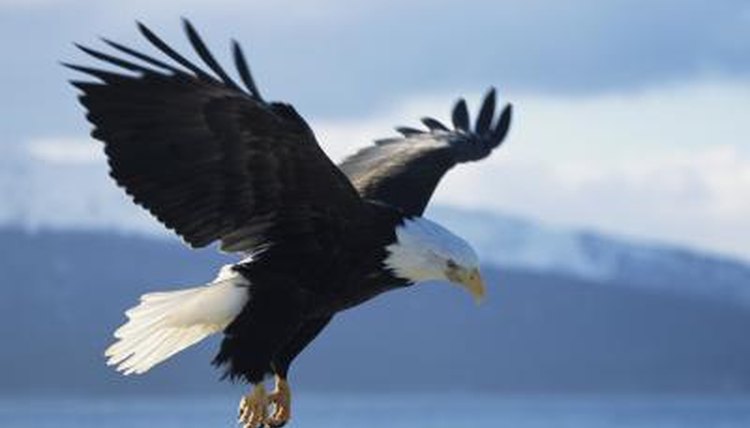
.................................................................................................
AERODYNAMICS OF THE BALD EAGLE
By Karen
Mihaylo
The national bird of the United States, the bald eagle
is found only in North America.
The aerodynamic bald eagle (Haliaeetus leucocephalus)
silently dives from the sky and snatches fish from the water.
He conserves energy by gliding on rising warm air currents
called thermals and flies at altitudes up to 10,000 feet.
When you see several eagles riding the thermals as a
group, you're viewing a "kettle" of eagles.
The Bald Eagle's Feathers
The bald eagle's body is covered with 7,000 hollow
feathers.
Bald eagle feathers are lightweight -- 30 weigh about
the same as a penny -- flexible and strong.
Interlocking layers of feathers contain insulating air
pockets; the bald eagle rearranges his waterproof feathers to space out or draw
together the air pockets, regulating body temperature.
Haliaeetus leucocephalus molts once a year, unlike
most birds, who molt several times a year.
The Bald Eagle's Wings
The 8-foot wingspan of an adult bald eagle is a
majestic sight.
The bird can reach 35 miles per hour during level flight.
Angling his head, wings and tail, he takes maximum advantage of the wind,
diving at up to 75 miles per hour with the wind at his back.
The bald eagle's wing tips have gaps between the
flight feathers. He adjusts his wing slots to sustain his flight pattern and
ensure precise movements.
The Bald Eagle's Tail
The bald eagle moves his tail from side to side, and
up and down.
During flight he spreads his tail feathers, increasing
the surface area; he glides and soars utilizing his tail to increase the effects
of updrafts and thermals.
As the bald eagle dives, swoops or brakes, he steadies
himself with his tail.
The Bald Eagle's Skeleton
The bald eagle's bones are hollow and virtually
weightless.
An adult eagle weighs between 8 and 16 pounds, the
male lighter than the female.
His bones weigh only about a half-pound, or 5 percent
to 6 percent of his total body weight.
The eagle's beak, talons and feathers are made of
lightweight keratin.
The bones' light weight factors into aerodynamics,
because weight determines how much lift is necessary to gain altitude relative
to volume or displacement -- relative to how much space the bird takes up -- as
well as determines maneuverability at speed.
Flight Training
The juvenile bald eagle reaches adult size when he's 2
months old.
He makes his first flight about a month later but
returns to the nest, where his parents will continue to care for him for
another four to twelve weeks.
The bald eagle spends the first four to five years of
his life in training, learning to hunt, strengthening his flight muscles and
perfecting his flying techniques.
Author
Karen Mihaylo
has been a writer since 2009. She has been a professional dog groomer since
1982 and is certified in canine massage therapy. Mihaylo holds an associate
degree in human services from Delaware Technical and Community College.

No comments:
Post a Comment